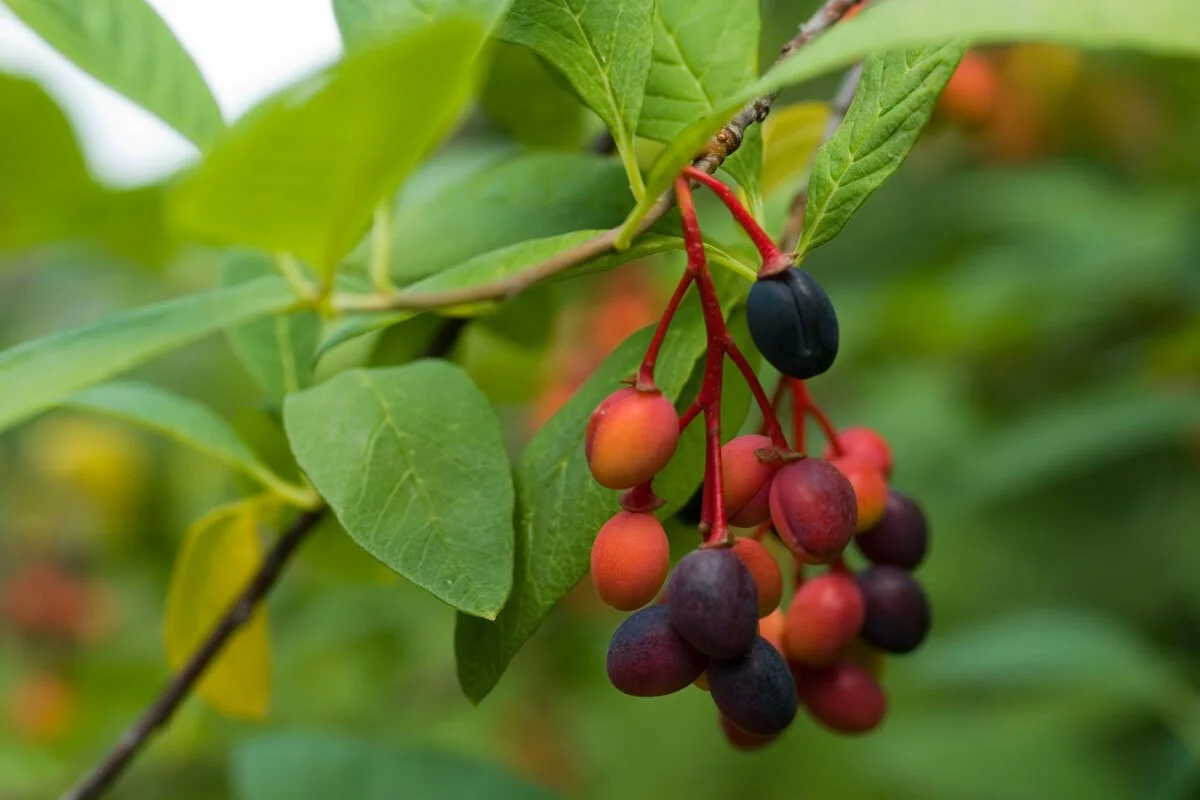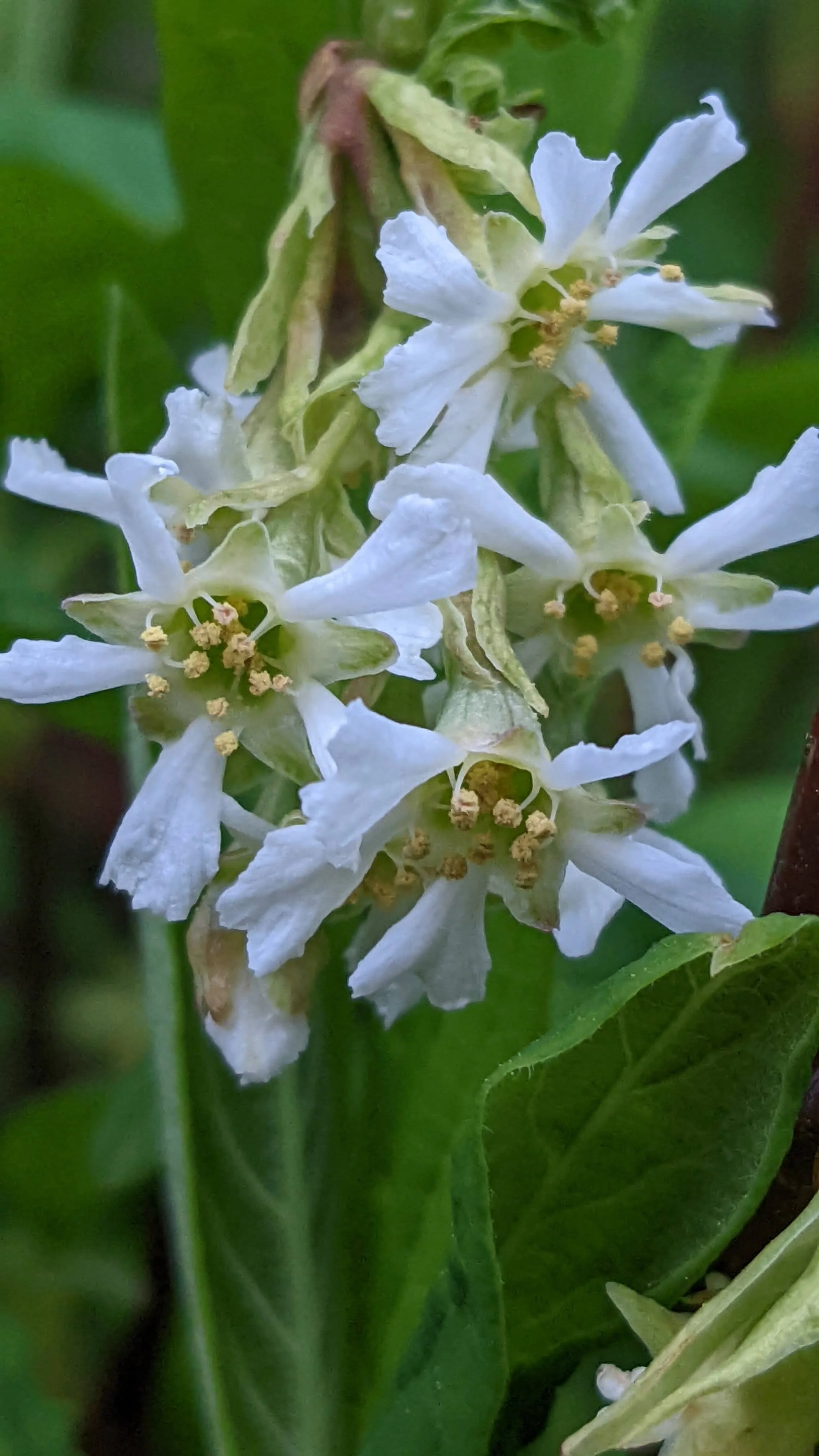Oemleria cerasiformis (Osoberry)
One of our early bloomers, Osoberry heralds spring from late January though March with dangling white clusters of flowers that give way to fruits (on female plants) that appear first as tiny peaches before darkening to the purple-blue miniature plum in mid-summer.
Male and female flowers are found on separate shrubs, thus requiring the presence of both in the landscape in order for the female flowers to receive pollen and bear fruits. Because the female plants are less common in nature than the male plants, having a female in your landscape ensures the beautiful fruits and the wildlife they will attract!
Osoberry grows over 15' tall, although it's more typical to see them about 6-10 ft. It is a common understory shrub that does best in partial shade or dappled light. It is tolerant of various soil conditions (including clay soils) as long as they are not saturated. In winter, its shiny, olive-green new twigs and large, bright pink buds brighten up the woodland landscape.
One of our early bloomers, Osoberry heralds spring from late January though March with dangling white clusters of flowers that give way to fruits (on female plants) that appear first as tiny peaches before darkening to the purple-blue miniature plum in mid-summer.
Male and female flowers are found on separate shrubs, thus requiring the presence of both in the landscape in order for the female flowers to receive pollen and bear fruits. Because the female plants are less common in nature than the male plants, having a female in your landscape ensures the beautiful fruits and the wildlife they will attract!
Osoberry grows over 15' tall, although it's more typical to see them about 6-10 ft. It is a common understory shrub that does best in partial shade or dappled light. It is tolerant of various soil conditions (including clay soils) as long as they are not saturated. In winter, its shiny, olive-green new twigs and large, bright pink buds brighten up the woodland landscape.
One of our early bloomers, Osoberry heralds spring from late January though March with dangling white clusters of flowers that give way to fruits (on female plants) that appear first as tiny peaches before darkening to the purple-blue miniature plum in mid-summer.
Male and female flowers are found on separate shrubs, thus requiring the presence of both in the landscape in order for the female flowers to receive pollen and bear fruits. Because the female plants are less common in nature than the male plants, having a female in your landscape ensures the beautiful fruits and the wildlife they will attract!
Osoberry grows over 15' tall, although it's more typical to see them about 6-10 ft. It is a common understory shrub that does best in partial shade or dappled light. It is tolerant of various soil conditions (including clay soils) as long as they are not saturated. In winter, its shiny, olive-green new twigs and large, bright pink buds brighten up the woodland landscape.


